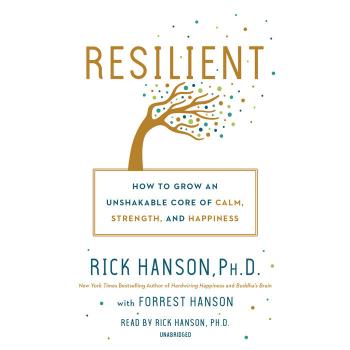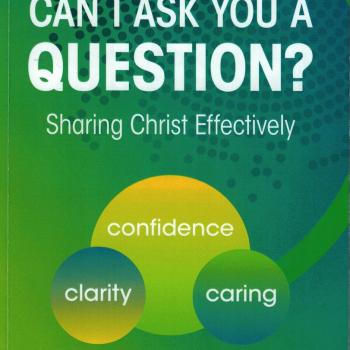The Divine Dance by Richard Rohr and Michael Morrell
The Divine Dance by Richard Rohr and Michael Morrell, is a book about letting the Trinitarian relationship of God the Father, Jesus the Son, and the Holy Spirit to help transform your life. Rohr and Morrell make a great effort at establishing that this mysterious idea like the Trinity is about God having a relationship with you. It becomes four-part harmony when we interact with the Trinity completely (22). Communion in the Trinity is like a dance. God is not just the dancer, He is the dance (27).
The book centers on two primary themes. The first theme suggests that the Trinity of the Godhead is a relationship. God is relationship itself. The second expands this theme to suggest that a Christian can have a relationship with the Trinity through love.
God is relationship
Rohr and Morrell spend time in this book to expand the ways to visualize the Trinitarian Godhead. Rohr and Morrell reveal a variety of ways to show the Trinitarian relationship. For example, in John 20:21-22, Jesus described the Trinity relationship as “breathing.” (49). The Trinity as a “reflection” of God (51). The relationship is enhanced by its diversity. Diversity is part of God’s creation, and it is also part of the Trinity (61). True spiritual freedom is attained by diversity and freedom. Freedom and diversity is created and maintained in Trinitarian love (64). As a result, God wants me to be me. He wants you to be you. God enjoys diversity. He enjoys uniqueness (62).
We have the capacity to know God on three levels – all based on the Trinitarian nature of God. We can know God on the transpersonal (Father), personal (Jesus), and impersonal (Holy Spirit) (82). Gender is not as important as the relationships between the three in the Trinity (83). Rohr and Morrell suggest that Dreifaltigheit (the three infoldings) is the true idea of the Trinity’s relationship with us – God flows out and we flow in (67). The best way to describe the three “persons” of the Trinity is to describe them as three faced. God is not two-faced. He is three-faced (85). We don’t live in a binary universe. Instead, we live in a ternary universe (92). Salvation is the capacity to stay in relationship with God (46). That can only happen because God relates to us through love.
God relates to us through love
Rohr and Morrell correctly define God’s essence or nature as love (43). God is love. Love is constantly changing itself toward greater union and unity (63). The divine dance is building a relationship with God. We don’t watch the dance as spectators. We participate in the dance as partners (64).
We were loved by God from the very beginning, as a full Trinitarian relationship (76). God chose us from the beginning and chose to have a relationship with us before He created us (Ephesians 1:3-14). Before we were created, we were known and loved in the mind of God. God was not first a being Who decided to love. Instead, Absolute Love revealed Himself in the shape of a Being (78). This is a dramatic paradigm shift. This puts the nature of God on its head.
Faith, hope, and love can only be experienced in community. If God were alone, He could not be faith, hope, and love. He can only express these attributes in community within Himself as a Trinitarian Being (81). Taking inspiration from Teilhard de Chardin, Rohr and Morrell state that the shape of the universe is love. All the actions of space: orbiting, exploding, expanding, and contracting is Infinite Love at work (126).
Observations from the book
Morrell and Rohr spend time explaining that the Trinitarian relationship is about love. They also explore the difficulties that come with trying to shift to this way of thinking. For example, they explore the feminine face of God in Scripture (94).
They state that the penal substitution is a risky theory because it implies that God the Father lacks the freedom to love or to forgive (132). Instead, they suggest that love-mirroring is better than debt transaction as a model of salvation (132). Rohr and Morrell show that God believes in restorative justice, not retributive justice. God restores people. He does not punish them (Ezekiel 16:53-55)(132). Rohr makes a convincing case using Trinitarian logic against the punitive nature of substitution atonement (148). To explain their restorative justice theme, Rohr denies that God has any component of wrath. He believes that the passages of God and His wrath is a progressive revelation to eventual love (140).
Along with these non-evangelical views, Rohr uses extra-Biblical sources to develop a set of analogies for the Trinity. Rohr sees an analogy from Hinduism (141-142). Rohr and Morrell don’t have these views because they want to destroy Christianity. Instead, I believe that they have these views because they truly believe that God’s design for His relationship is through love.
For example, Rohr and Morrell reveals why we pray to God the Father and not the Trinity. We are with Christ, in the Spirit praying to God (152). Prayer is more a merging, not manipulating, a dancing rather than dominating, a partnering, rather than partisanship (154). All things give glory to God just by being what they are. Humans are the only ones who resist their own happiness. Rohr calls this God’s suffering. The one species whom God gave free will has used it to say no to itself. Rohr hints that this is what is meant by sin (172). This explanation about enjoyment is similar to the hedonism of John Piper.
Rohr and Morrell end their book by reinforcing the fact that God operates in a relationship out of love. God is Love itself. He does not decide to love. He is love. God cannot not love, because love is the nature of God’s very being (185). As an example, Rohr and Morrell suggest that you can replace Word or Logos in John 1:1-14 with the word Relationship or Blueprint and understand what the introduction to John means (186). Personally, I agree with Rohr and Morrell that love is the nature of God and the way that He relates to us is through love. (I have been saying the same for years!)
At the end of the book, Rohr and Morrell share a set of meditation practices, a list a litany that invokes the Holy Spirit. They give 70 evocative names of God (210). In the back of the book, there is a list of websites (one for Richard Rohr and one for Mike Morrell) as well as ways to join their respective newsletters (219). I have been part of Michael Morrell’s Speakeasy book review network for three years. I have enjoyed the opportunity to review a variety of books (some which have enlightened my faith, and some that have challenged by thinking). I have always believed that Love is the basic nature of God. This book is not a complete systematic theological treatise on God’s love. It is just a primer, but a very good one. For my evangelical friends, this book will challenge your understanding of God. You may disagree with many of the theological assumptions that Rohr and Morrell make. Yet, I believe this book will expand (and not hinder) your understanding of God, and thus your witness for Him.
Disclosure of Material Connection: I received this book free from the author and/or publisher through the Speakeasy blogging book review network. I was not required to write a positive review. The opinions I have expressed are my own. I am disclosing this in accordance with the Federal Trade Commission’s 16 CFR,Part 255.













